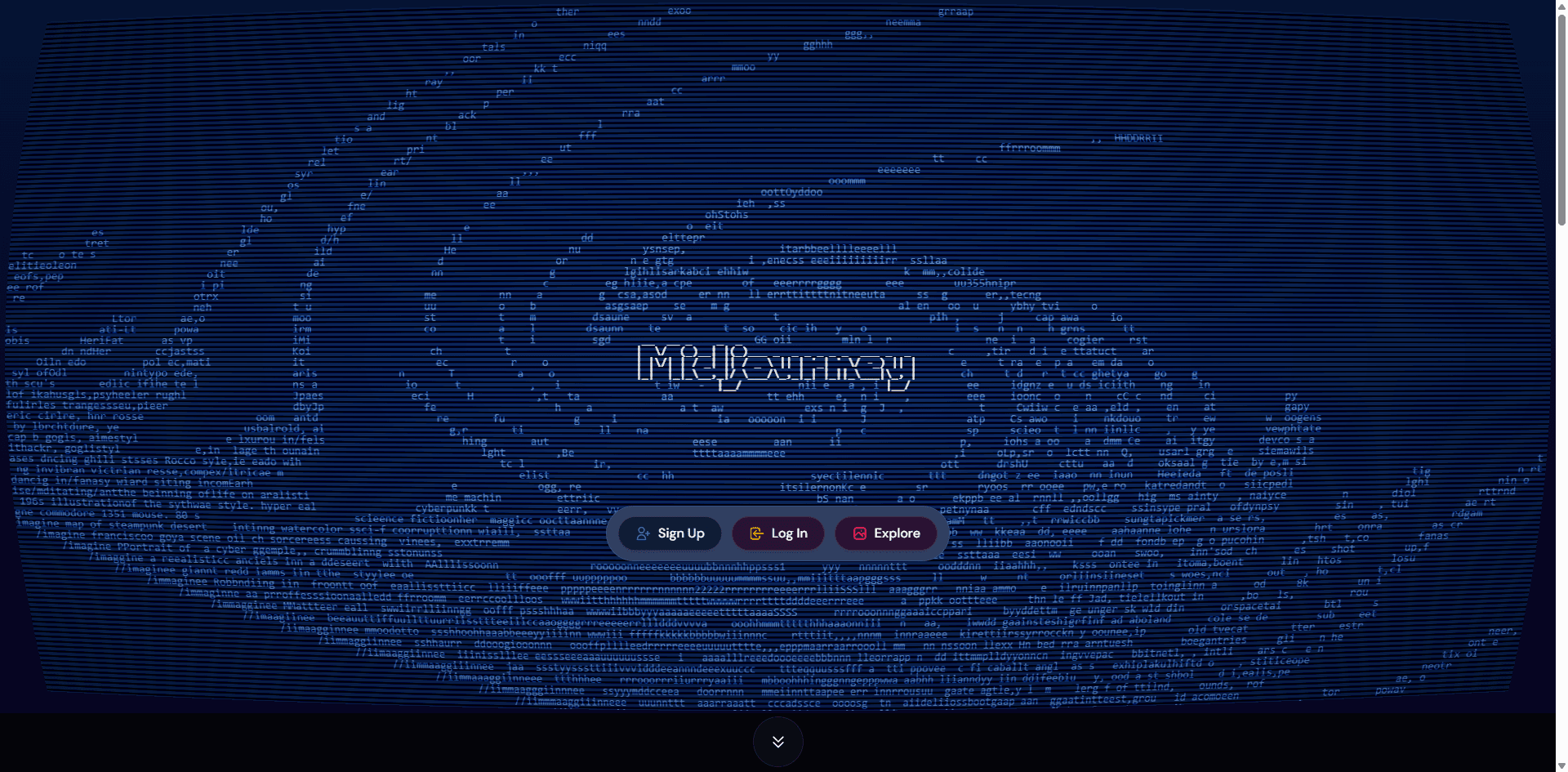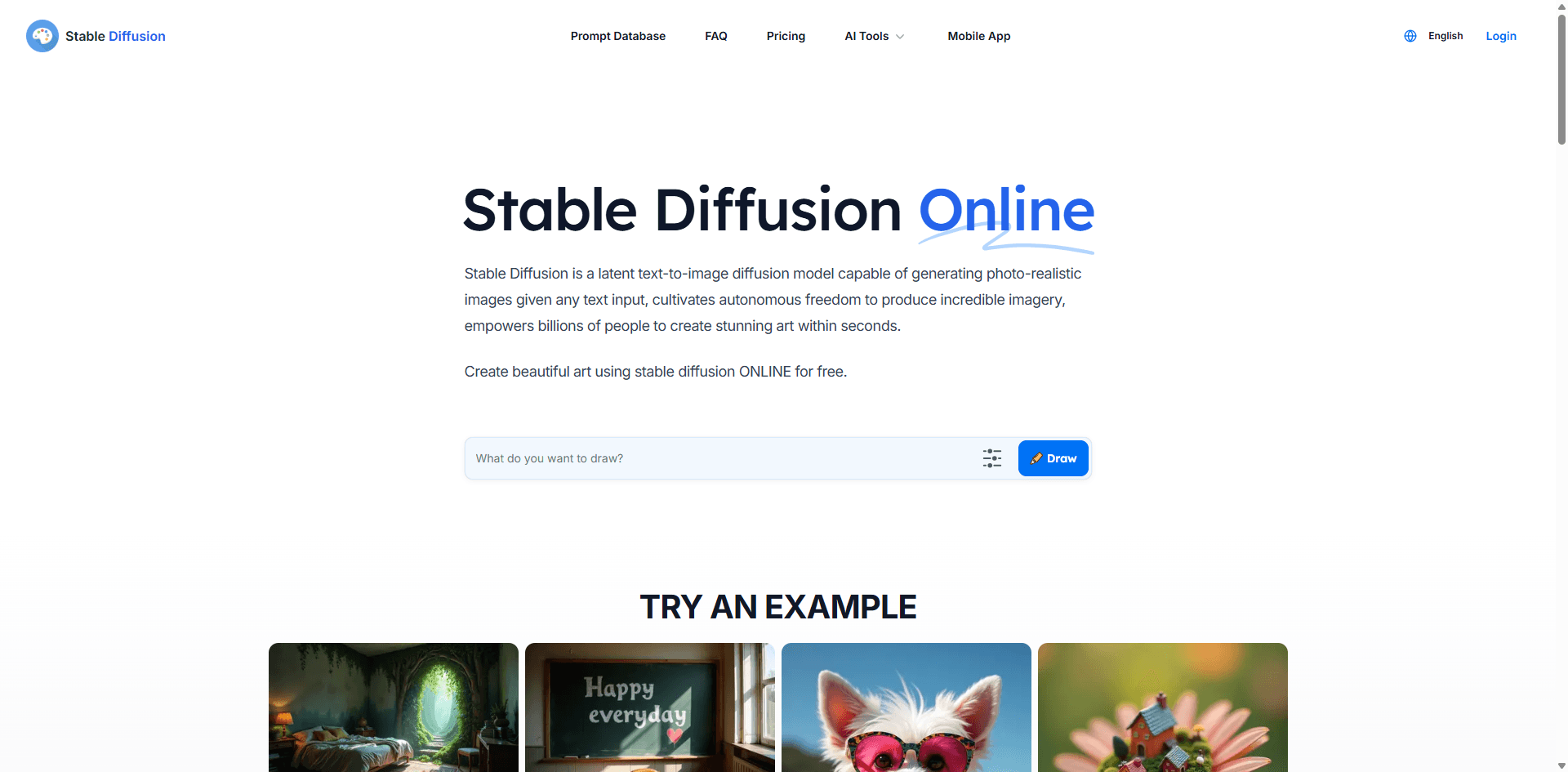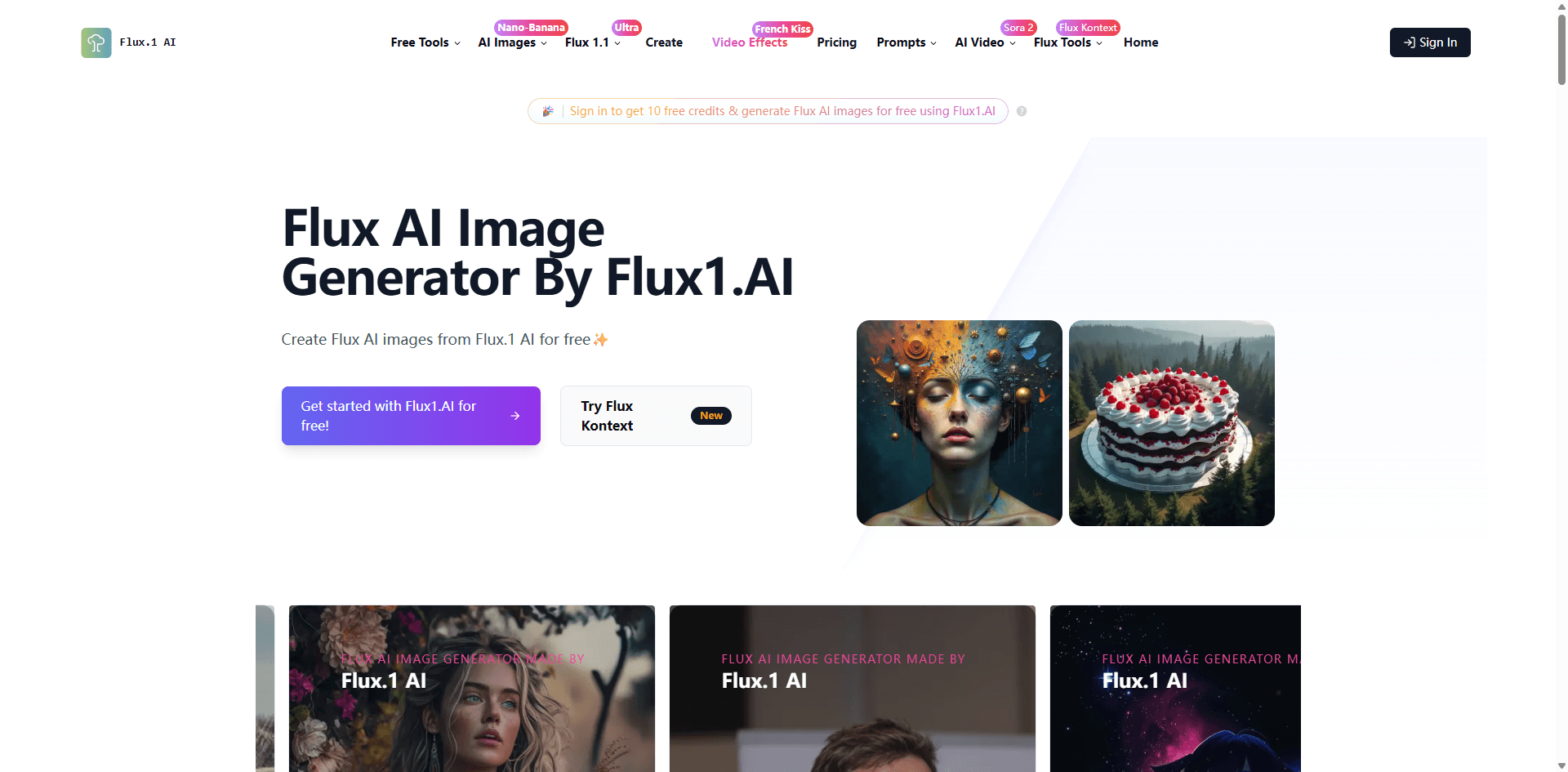Midjourney vs Stable Diffusion vs Flux:2025年哪款AI图像生成器才是真正赢家?
最后更新: 2025-11-13 17:26:05
最后更新:2025年10月13日阅读时长:18分钟
说实话,我得坦白。我已经花了三个月时间和太多咖啡来测试这些AI图像生成器。生成了超过5,000张图片。花了可能本不该花的钱。你知道吗?每个工具都用不同的方式让我抓狂。
但我也分别因为不同的理由爱上了它们。
直接结论(因为我知道你很忙)
🎨 Midjourney - 画面漂亮,超级易用
价格: $10-60/月 | 适合: 想要立刻出结果的任何人
⚙️ Stable Diffusion - 免费但需要技术能力
价格: 免费(算是)| 适合: 喜欢折腾的技术极客
📸 Flux - 逼真的程度令人震惊
价格: 免费-$30/月 | 适合: 需要仿真照片级效果时
总结:普通人选Midjourney。开发者选Stable Diffusion。如果想要看起来像照片的效果就选Flux。
大家都在找的对比表
| 功能 | Midjourney | Stable Diffusion | Flux |
| 画得美不美 | 当然美 | 偶尔美 | 当然美 |
| 易用性 | 我奶奶都会用 | 呵呵,不行 | 相当容易 |
| 逼真度 | 艺术感 | 可以不错 | 逼真到吓人 |
| 艺术风格 | 完美 | 惊艳 | 一般 |
| 生成速度 | 30-60秒 | 10-120秒 | 10-30秒 |
| 月费 | $10-60 | $0-50+ | $0-30 |
| 上手难度 | 几乎没有 | 吃力 | 中等 |
| 自定义能力 | 不能 | 全都能 | 部分功能 |
| 商业用途 | ✅(付费) | ✅ | ✅ |
| 图片文字 | 很烂 | 也很烂 | 真的能用! |
| 免费选项 | ❌ | ✅ | ✅(有额度限制) |
| 隐私 | 别人都能看到 | 自己本地运行 | 别人都能看到 |
这些到底是什么?
Midjourney:人人都在聊的那个
2022年由David Holz和他的团队创办。你很可能在Twitter上看过Midjourney的作品——就是那些美得不可思议、几乎完美的图片。它火的原因就是你只要在Discord里输入你想要的内容,分分钟就出艺术品。
他们现在已经出了V6.1并终于上线了网页版(谢天谢地,因为之前用Discord真的有点别扭)。
你需要知道的:
- 需要付费,没有免费试用
- 生成美图一如既往地稳定
- 用户数超过2000万
- 只能云端用,不能自己本地跑
Stable Diffusion:极客开发者的最爱
这是Stability AI在2022年发布的开源项目。基本让所有人都可以下载并运行真正的AI模型,把AI绘画变得人人可及。最新的版本是SDXL和SD3。
它的不同之处:
- 只要你能运行它,就完全免费
- 你完全拥有这一切
- 有成千上万的自定义版本
- 需要真正的计算机技能
- 可以运行在你的游戏电脑上
Flux:真正靠谱的新玩家
由Black Forest Labs于2024年创建——亮点在于,它是由最初开发Stable Diffusion,但后来离开Stability AI的那批人做的。他们基本上就是“我们能做得更好”,事实证明他们的确做到了。
一共三种版本:
- Flux Pro(昂贵,质量最佳)
- Flux Dev(中等水平)
- Flux Schnell(速度快、近乎免费)
最突出的亮点?它真的能把文字渲染对。就是可读的文本。在2025年这本不该是什么值得惊叹的事,但现在确实很难得。
Midjourney:让我好好说说

它的实际工作方式
你加入他们的Discord或用网页版应用。输入 /imagine 加上你脑海里的想法。大约等45秒。得到四个版本。选一个喜欢的,放大,搞定。
V6.1的更新让它更懂你的真实意图,而不是AI自己以为的意思。
它到底哪里好
生成的图片就是……美
我不知道还能怎么形容。哪怕我输入很普通的提示比如“一只戴帽子的猫”,生成出来都像有人花了几个小时精心绘制。色彩搭配合适,构图合理,就是自带美感。
我妈都能用
真的。不用配置,不用折腾技术问题,不用看文档。只要会打字就能做图。我三分钟就用上了。
几乎不出废图
其他工具可能五张里有一张能用。Midjourney?差不多五张能用四张。这种稳定性对于赶工很值钱。
它很会把握“氛围”
想要“赛博朋克”?“乡村田园风”?“黑色电影风”?它就是懂这些词的审美点,你不用解释得很细。
社区巨大
两千万用户到处都能找到灵感。公开图库超级上瘾——你能滚动好几个小时,一边欣赏一边偷,啊不,是“学习”别人的提示词。
它的槽点
没有免费版了
2023年他们取消了免费试用,因为太多人滥用。现在最少得付10美元才能体验。这真的挺烦。
自定义空间很小
想训练自己的模型?不行。想导入自定义风格?也不行。只能用Midjourney给的东西。有人会觉得这是硬伤。
Discord真不适合这个
虽然加了网页版,但还是很多人用Discord,项目分散在各个频道很别扭。我更想要一个独立的App。
文字渲染依然糟糕
想要标志上写“COFFEE SHOP”?你得到的是“CØFFƎƎ SHØPP”或者一串乱码。每。次。都这样。真的让人抓狂。
有时它会无视你的要求
你要一辆红色的车,给你蓝色的。要三个人,来五个。AI总有自己“想法”,有时候会盖过你。
价格如何
说实话讲讲价格:
Basic - $10/月
- 快速模式大概200张图片
- 门槛低,能体验
- 适合爱好者
- 我第一周就用完了
Standard - $30/月
- 900张快速图片或无限慢速图片
- 但慢速模式超级慢(10分钟起步)
- 大多数人其实就够用了
- 想要隐私模式再+20美元
Pro - $60/月
- 1,800张快速图片
- 不限慢速
- 含隐私模式
- 有优先队列
- 除非是工作室否则未必用得上
实话说:试验时快速图片的额度很快就用完了。尤其新手阶段会疯狂试错。记得合理安排预算。
什么时候应该用Midjourney
它最适合:
各种概念美术 - 角色、场景、气氛板。这是它最厉害的领域。我用它做了一个游戏项目,艺术指导感动得流泪(真事)。
社交媒体内容 - Instagram、YouTube缩略图、博客封面。做出的图让人停下来看看。
奇幻和科幻 - 龙、飞船、魔法森林。它对这些题材有天然理解。
客户现场演示 - 风格稳定,不太会被AI瑕疵尴尬到。
按需印刷 - T恤、海报、马克杯。画面质量很适合做实物。
如果你需要照片级真实感、精确控制、可读文本或者预算吃紧,就可以跳过Midjourney。实话实说。
实测举例
测试:“雨天温馨咖啡馆,暖色调灯光,电影感”
生成的图像像韦斯·安德森电影剧照,窗上的雨水有美丽的焦外光斑。光影氛围很棒。但菜单板的文字?完全看不清。我要求4个人,结果有7个人。这就是Midjourney的经典表现。
测试:“商业女性专业证件照,影棚灯光”
表现不错!不过,看久了会有点怪异感,好像一切都对,但还是觉得哪里不自然。大部分场景够用,但对人像挑剔的可能会注意到。
测试:“沉睡在宝藏上的古老巨龙”
这让我爱上了它。画面气势宏大,宝藏真实且自然散落,龙的结构合理,一切都很完美。这张图直接成了我的电脑壁纸。
Stable Diffusion:深度解析

它到底怎么工作
好吧,其实很技术,但我尽量讲简单点。Stable Diffusion是一个开源模型,它会先生成一张随机噪点图,再根据你的文本逐步“去噪”变成一幅画。你可以把它想象成雕刻家先从一块大理石开始。
你可以用Automatic1111或ComfyUI等多种界面来运行它。如果没有高配电脑,也可以用云服务。目前推荐的常用版本:SDXL和SD3。
区别在哪?你能控制一切。采样方法、步数、CFG scale、种子、反向提示词……刚上手会觉得信息量爆炸。
有什么优点
它免费
当然,你要先买块还不错的显卡。但从那以后你可以无限生成图片。我本地生成了大约一万张,一分钱订阅费都没花。
你能控制一切
想用AI训练自己的脸?可以。想要动漫风?有50多种动漫模型。想融合模型?想怎么玩就怎么玩,属于你的游乐场。
绝对隐私
本地运行,奇葩提示词都只留在你自己机器上。没人收你数据,也没人评判你的创意。
社区活跃到离谱
光Civitai就有成千上万的自定义模型。有人专门做维多利亚时期植物插画模型,有专门的80年代动漫,还有各种建模渲染。你想找的冷门领域,总有人做出来。
你还可以做开发
想搞一个生成图片的应用?Stable Diffusion完全支持,你能做,很多AI美术创业公司其实都基于它。
一直在进步
社区每天都有新内容。新技巧、新模型融合、LoRA,创新层出不穷。
槽点
学习门槛高
我花了两周时间才稳定出好图。你得了解采样器、CFG scale、反向提示词、模型选取……特别多。我前50张都是废图。
硬件有门槛
我自己的游戏PC是RTX 3080(10GB显存),用着很顺。可不是人人家里都有。要想流畅跑SDXL,显卡预算得$500-1500。
生成质量波动大
一张出来是神作,下一张设置一样结果一团糟。在你完全掌握前都不稳定。
环境配置费老大劲
安装Automatic1111、下各种模型(超级大)、调整设置……我技术还行,都搞了一整天。
没有客服支持
出问题(肯定会有),只能晚上2点搜Reddit帖子。没有客服,全靠自己。
提示词工程很复杂
Midjourney的提示词:“a cat”
Stable Diffusion 提示词:"a cat, highly detailed, 8k, trending on artstation, unreal engine, photorealistic, masterpiece, by greg rutkowski, negative prompt: ugly, distorted, low quality, blurry, watermark, signature"
看出区别了吗?
真实成本
自己运行:
- GPU:$300-1500(一次性)
- 电费:约 $10/月
- 你的时间:值得考虑
- 月订阅费:$0
没有 GPU 时的云端方案:
- RunPod:约 $0.50/小时
- Replicate:$0.01-0.05/张图片
- Stability AI API:$0.002-0.08/张图片
- Google Colab:免费版或 $10-50/月
我现在本地运行,但一开始是在 Google Colab 上试水的。
你该在什么时候用
适用于:
开发产品的开发者 - API 接入无与伦比。大多数 AI 绘画应用实际上都在用 Stable Diffusion。
大规模生成需求 - 需要 1000 个不同版本?本地生成几乎不花钱。
自定义风格 - 用你公司的产品、你的绘画风格或者特定角色训练模型。
隐私敏感的工作 - 医疗影像、专有设计,任何不能发给第三方的内容。
学习 AI - 想真正搞懂原理?这是你的工具。
钱少时间多的时候 - 免费但需要付出努力。
如果你想要即时效果、不喜欢排查或明天就要交付,建议跳过。
我的真实测试结果
测试:"雨天温馨咖啡馆"
第一次用基础 SDXL:一般,挺假。换成 Realistic Vision 模型并调好参数:哇,像照片!但调到满意花了 30 分钟。
模型的潜力有,但需要你去调整。
测试:"商务女性证件照"
用了合适的肖像模型(用 Realistic Vision XL),效果直逼专业摄影。但没配好负面提示词?奇怪的瑕疵,手指变多,脸超怪。这模型很娇气。
测试:"洞穴中的龙"
专门下了 Epic Diffusion 模型做奇幻画面。效果令人震撼。某些方面比 Midjourney 更好,因为我能精确控制龙的姿势和颜色。但同样需要知识和设置。
入门(实话实说版)
第 1 步:选界面
新手推荐用 Automatic1111。ComfyUI 功能更强但更复杂。
第 2 步:检查你的电脑
你需要:
- Nvidia 显卡,6GB 以上显存(SDXL 需 10GB+)
- 至少 16GB 内存
- 100GB+ 剩余空间
- Windows 10/11(Linux 也行)
不满足?那就用 Google Colab 或 RunPod 吧。
第 3 步:安装
Automatic1111 安装方法:
- 安装 Python 3.10.6
- 安装 Git
- 从 GitHub 下载 Automatic1111
- 运行 webui-user.bat
- 等待 20 分钟配置
- 用浏览器打开 localhost:7860
细节这里略过,可以看 YouTube 教程。
第 4 步:下载模型
别用原始模型,效果一般。从 Civitai 下载:
- Realistic Vision(照片类)
- DreamShaper(通用)
- Anything V5(动漫)
- Epic Diffusion(奇幻)
每个模型 2-6GB。下模型得有耐心。
第 5 步:生成你的第一张好图
我实际用的入门设置:
Prompt: a cozy coffee shop, rainy day, warm lighting, detailed, high qualityNegative: blurry, low quality, distorted, ugly, deformed, watermarkModel: Realistic Vision XLSampler: DPM++ 2M Karras Steps: 25CFG: 7Size: 1024x1024This should give you something decent.Step 6: Join communities- Reddit 上的 r/StableDiffusion
- Civitai 获取模型
- YouTube 教程
- 准备掉进 AI 研究的深坑
实话说:第一周很挫败。第二周开始有感觉。第三周变厉害。第二个月就能做出很酷的作品。
Flux: 意外的赢家?

Flux 究竟有啥不一样
最初开发 Stable Diffusion 的那批人离开了 Stability AI,创办 Black Forest Labs。2024 年推出了 Flux,并且直接表态“这才是我们理想的做法”。
老实说?他们可能真的对。
三个版本:
- Flux Pro:最佳画质,需要付费,只能用 API
- Flux Dev:中等档,足够多数需求
- Flux Schnell:又快又便宜/免费
不像 Midjourney 的不透明规则,也不像 Stable Diffusion 的“自己摸索”,Flux 通过云端 API 提供服务。你可以用 Replicate、fal.ai 等平台访问。
它特别在哪里
照片级写实效果,真的有点吓人
我给我老婆看用 Flux 生成的肖像,她问模特是谁。以前 AI 图片从没发生过这种事。皮肤细节、灯光和自然姿势——真实得让我不适。
它能渲染文本
这点怎么强调都不为过。别的 AI 工具都处理不好文本,Flux 直接解决。要标志?可以。招牌?可以。有标题的书封面?实测可用。
我做了个假电影海报,文字 100% 可读。第一次尝试就成功,差点感动到哭。
严格按提示词执行
用 Midjourney,我说“三个人”,结果出来五个。用 Flux,我说要三个人、指定位置,它就乖乖照做。提示词的执行力堪称一绝。
图像很自然
Flux 作品没有“AI 风”,像摄影师或设计师手作。构图合理,光影物理正确。
真的很快
Flux Schnell 只需 10-20 秒一张。即使是 Flux Pro 也比 Midjourney 的 45-60 秒还快。做方案时快很重要。
有免费额度
不像 Midjourney 的“要么付费要么走人”,你可以在 fal.ai 等平台免费体验 Flux Schnell。很聪明。
不那么好的地方
艺术风格?算了
想要动漫?奇幻?印象派?Flux 这方面表现很差。它只针对写实优化,风格化输出很生硬。
太新了
2024 年才上线,因此教程少、社区小、资料有限。有时要自己摸索。
没有漂亮界面
你得用第三方平台或者写 API 调用。没有 Midjourney 那种精美 App。更像“开发者工具”而不是“创意软件”。
定制性不高
不能自训练模型,没有 LoRA,Black Forest Labs 给啥你只能用啥。进阶用户觉得限制大。
平台混乱
Flux 分布在 Replicate、fal.ai、together.ai 等多个平台。价格不同,功能不同,生态割裂体验不好。
少了“灵光一现”
Midjourney 有时会意外产出惊艳的创意,Flux 太老实了。有些人会怀念那种混乱的创造力。
实际花多少钱
不同平台价格不一样(有点烦):
Flux Schnell:
- Fal.ai:有免费额度,之后约 $0.003/张
- Replicate:约 $0.003/张
- 用于测试基本免费
Flux Dev:
- Fal.ai:约 $0.02/张
- Replicate:约 $0.025/张
- 性价比最佳
Flux Pro:
- Fal.ai:约 $0.04/张
- Replicate:约 $0.055/张
- 专业级
真实成本:
- 50 张/月:$0-3
- 500 张/月:$10-25
- 5000 张/月:$100-275
大规模使用时,比Midjourney便宜得多。
最佳应用场景
使用Flux可以:
任何需要看起来像真实照片的内容 - 产品拍摄、生活方式图片、广告。如果你希望别人相信这是照片,就用Flux。
含有文字的设计 - 标志、海报、书籍封面、标识、信息图。终于有一个工具能正确处理文本了。
专业人像 - 证件照、头像照、角色参考。真实感无可匹敌。
产品模型图 - 电商照片、包装设计、目录图片。效果就像雇了摄影师。
建筑可视化 - 建筑渲染、室内设计、房产宣传。
需要速度的时候 - Flux Schnell在迭代上非常快。
不要用于幻想艺术、动漫、风格化插画,或任何应该明显带有艺术感而非真实感的内容。
我的测试结果
测试:“雨天的温馨咖啡馆”
输出看起来就像我用相机拍的照片。窗户上的雨滴都能一颗颗看清。反射物理正确。但缺少Midjourney版本的艺术“氛围”。
权衡:真实感与美学。
测试:“商务女性证件照”
完全完美。皮肤质感有自然毛孔。眼睛有真实的高光。头发像一根根单独的发丝。我完全可以用它做LinkedIn头像。
这就是Flux的杀手锏。真实的人像。
测试:“洞穴里的龙”
生成了一只看起来很真实的龙(假如真的有龙的话)。技术上很厉害。但缺乏那种让Midjourney版本具有魔幻色彩的史诗与幻想质感。它太真实了,几乎像纪录片风格。
简单说,不适合幻想题材。
测试:“复古风格、带‘COFFEE SHOP’字样的海报”
文字清晰可读。两个词拼写都正确。字体很有设计感。背景设计干净。我真的用它做了一个实际项目。
单凭这一点,Flux就值得学习。
上手指南
步骤1:选择平台
初学者建议:
- Fal.ai - 最简单的界面,免费额度
- Replicate - 热门,文档好
- Together.ai - 快速,适合开发者
我大多用fal.ai。
步骤2:注册账号
以fal.ai为例:
- 进入fal.ai
- 注册账号(仅需2分钟)
- 领取免费额度
- 可选项:充值购买更多额度
步骤3:选择你的Flux
推荐从Flux Schnell开始:
- 免费/便宜
- 快速(10秒)
- 质量不错
- 需要时随时升级
步骤4:首次提示词
Flux喜欢自然、细致的描述:
优秀提示词:“一杯专业拍摄的热拿铁,摆放在木桌上,窗外的晨光形成柔和阴影,浅景深,Sony A7III相机+50mm f/1.4镜头拍摄”建议:- 像写摄影稿件一样描述- 标明相机/镜头风格- 具体描述光线情况- 包含构图细节步骤5:关键设置- 引导强度:7-10(对提示词的依从度)
- 步数:Schnell用4-8步,Pro用20-50步
- 长宽比:按需选择
- 种子:相同种子=相似结果
步骤6:文字渲染技巧
想要可读文本,请明确写出来:
“创建一张带‘COFFEE SHOP’(咖啡店)大写衬线字体的复古海报,字母位于顶部,边缘有装饰性边框,色调温暖”想要显示的原文要用引号括起来。说真的,用Flux只需30分钟就能上手并做出好作品。比Stable Diffusion容易多了,几乎和Midjourney一样简单。真正的对比:我用相同的提示词做了测试
我把同样的提示词输入了三个平台。实际效果如下:
测试1:奢华手表产品照
提示词:“奢华手表摆放在大理石上的专业产品摄影,影棚灯光,高端广告风格”
Midjourney:
- 效果华丽,非常有艺术感
- 手表的结构很有“创意”(副表盘数量不对)
- 大理石看起来像画的
- 适合做概念图,不适合真实广告
- 感受:“这可以登杂志……作为插画”
Stable Diffusion(SDXL + Realistic Vision):
- 6次尝试并调整后:非常好
- 设置对了,手表细节很准确
- 大理石看起来很像真实照片
- 调参耗了30分钟
- 感受:“终于有可用的图了”
Flux Pro:
- 第一次就像专业产品摄影
- 手表反光物理效果完美
- 完全可以用在真正的奢侈品广告中
- 零瑕疵
- 感受:“等下,我是不是找到了一张真照片?”
赢家:商业产品图首选Flux。毫无悬念。
测试2:史诗龙幻想场景
提示词:“史诗幻想场景,龙栖息在悬崖,俯瞰中世纪王国,金色时光照明,幻想艺术风格”
Midjourney:
- 简直惊艳
- 龙帅气又有趣的结构
- 王国细节丰富
- 色彩分级完美
- 让我想为它写本奇幻小说
- 感受:“这我要挂墙上展示了”
Stable Diffusion(Epic Diffusion模型):
- 调整了好一阵但最终达到了效果
- 与Midjourney 类似的品质
- 对龙的颜色和姿态可控性更强
- 需要选对模型与设置
- 感受:“为了这种控制力,值得花功夫”
Flux Pro:
- 龙显得过于逼真(太逼真了?)
- 王国像纪录片里的CG
- 技术完美但没有魔幻感
- 没有幻想艺术的“气质”
- 感受:“这……还行?但不是我想要的”
赢家:奇幻和艺术一定选Midjourney。无可争议。
测试3:带文字的信息图
提示词:“展示‘5 Steps to Success’的图标和可读文本的信息图海报”
Midjourney:
- 排版和配色都很漂亮
- 图标很有创意
- 文本完全乱码
- “5 Steps to Success”变成了“5 ST3PS TØ SÙCČƏSS”
- 只能全部重做文字,无法直接用
- 感受:“模板还行,成品没法用”
Stable Diffusion:
- 版式不错
- 文本基本是乱码
- “Success”变成了“Succezz”或“Sucess”
- 大概每十次有一次能看
- 感受:“差点意思”
Flux Pro:
- 文本可读
- “5 Steps to Success”真的写出来了
- 图标清晰
- 版式专业
- 字距有点小问题,但完全能用
- 感受:“卧槽,真的行!”
赢家:Flux完爆同类。单凭这一点都值了。
测试4:自然人像
提示词:“一位三十多岁微笑女性的肖像,自然光,抓拍摄影风格”
Midjourney:
- 真的很漂亮
- 有点怪异谷感(眼睛有些不对劲)
- 皮肤看起来像Instagram滤镜效果
- 美观但不太真实
- 感受:“可以用来做灵感板”
Stable Diffusion(Portrait+模型):
- 表现不稳定
- 第一次尝试:奇怪的瑕疵
- 第二次尝试:多出手指(经典问题)
- 第五次尝试:真的不错
- 需要负面提示词和运气
- 感受:“终于……浪费了不少时间”
Flux Pro:
- 看起来像真实照片
- 皮肤毛孔和质地很自然
- 没有怪异谷感
- 可以是真的棚拍出来的
- 感受:“这个我可以当作商业用途”
胜者:人像写实推荐Flux。不用比了。
测试5:动漫角色
提示词:“动漫风格角色,魔法少女粉色头发,动态姿势,赛璐璐风格”
Midjourney(niji模式):
- 完美的动漫美学
- 线条和赛璐璐上色都很干净
- 自然把握动漫惯例
- 角色动态且吸引人
- 感受:“可以直接出现在真正的动画里”
Stable Diffusion(Anything V5):
- 用动漫模型非常强大
- 风格控制非常多
- 能匹配任何特定动漫时期/风格
- 需要选对模型,选对就很完美
- 感受:“社区才是最大优势”
Flux Pro:
- 像在用3D渲染模仿动漫
- 过于真实,不适合动漫风
- 缺少赛璐璐美学
- 完全抓不到题目要点
- 感受:“不是做这个用的工具”
胜者:Stable Diffusion(动漫模型)或Midjourney Niji。Flux不适合这类需求。
速度测试(枯燥但重要)
我以1024x1024图片全程计时:
Midjourney:
- 初始4个变体:45-60秒
- 放大:+25秒
- 变体:+45秒
- 高峰时段:2-3分钟(队列地狱)
- 完整流程:2-5分钟
Stable Diffusion(我的RTX 3080):
- SD1.5:6秒(非常快)
- SDXL:18秒(也很快)
- 放大:+15秒
- 云服务:30-90秒(看排队情况)
- 完整流程:25秒-2分钟
Flux:
- Schnell:12秒(很厉害)
- Dev:28秒(不错)
- Pro:45秒(可接受)
- 平台很重要(fal.ai最快)
- 完整流程:15-60秒
实际优胜者:有硬件就本地跑Stable Diffusion,云端用Flux Schnell最快。
但关键是:Midjourney“慢”其实无所谓,因为一次就成功。Stable Diffusion虽然单次更快,但可能得做10次才出一张理想图片。
真正重要的是“到好结果的时间”,不是每张图片的时间。
实际费用(真实数字)
轻度用户:每月50张图片
Midjourney Basic($10/月):
- 可以生成约200次快速图片
- 单张约$0.05
- 我的看法:方便非常值得付费
Stable Diffusion:
- 本地:$0(电费大概$2)
- 云端:约$2.50
- 我的看法:如果预算少,这是最佳选择
Flux Schnell:
- 在fal.ai上约$0.15
- 单张约$0.003
- 我的看法:几乎免费
最佳性价比:Flux或者本地Stable Diffusion
常规用户:每月500张图片
Midjourney Standard($30/月):
- 提供约900次快速+无限慢速
- 但慢速模式体验真的很差
- 单张约$0.03(快速模式)
- 我的看法:专业用户还是值得
Stable Diffusion:
- 本地:$0
- 云端:约$25
- 我的看法:本地现在更合适
Flux Dev:
- 约$12.50
- 单张$0.025
- 我的看法:非常好的折中方案
最佳性价比:本地SD,或者Flux品质/价格平衡
重度用户:每月5000张图片
Midjourney Pro($60/月):
- 不够用,需要多个账户
- 总成本$180-240
- 单张$0.036-0.048
- 我的看法:规模化极差
Stable Diffusion:
- 本地:$0(电费约$15)
- 云端:约$250
- 我的看法:本地几乎没得选
Flux Dev:
- 约$125
- 单张$0.025
- 我的看法:免部署非常划算
最佳性价比:本地Stable Diffusion完胜
真实案例:YouTube封面
假设你每月制作50个封面:
Midjourney($10):质量完美,工作流很快,外观非常赞 Stable Diffusion($0):免费但学习成本高 Flux($1.50):性价比不错
专做YouTube封面?即使贵一点我也会选Midjourney,原因:
- 封面必须引人注目(Midjourney最擅长)
- 时间就是金钱(工作流最快)
- 一致性重要(几乎不会出错)
- $10/月对做生意来说不算什么
但如果你要做500个封面?本地Stable Diffusion才是王道。
简易功能排名
复杂提示词理解力
🥇 Flux - 精准执行你的要求
🥈 Midjourney - 很接近但偶尔忽略部分内容
🥉 Stable Diffusion - 格式要求较高
原始图片质量
🥇 Flux Pro - 技术上完美
🥈 Midjourney V6 & SDXL - 都很优秀,风格差异大
艺术美感
🥇 Midjourney - 自带审美
🥈 Stable Diffusion - 合适模型下可媲美
🥉 Flux - 技术性强于艺术性
易用性
🥇 Midjourney - 连我妈都能用
🥈 Flux - 操作也很直接
🥉 Stable Diffusion - 上手会很痛苦
控制与自定义
🥇 Stable Diffusion - 可无限定制
🥈 Flux - 有部分参数控制
🥉 Midjourney - 接受或放弃原样
文本渲染能力
🥇 Flux - 终于可以用了
🥈 Midjourney & SD - 都一样糟糕
可靠性
🥇 Midjourney - 始终表现优秀
🥈 Flux - 基本稳定
🥉 Stable Diffusion - 时好时坏
社区与资源
🥇 Stable Diffusion - 巨大的生态圈
🥈 Midjourney - 活跃大社区
🥉 Flux - 还在成长中
那么你该选哪个?
如果你符合以下情况可以选Midjourney:
你是一个普通人,只想要漂亮的图片,不愿意学习计算机科学。你注重美感。你有 $10-60/月预算。你需要马上见效,而不是等到下周。
最适合:
- 内容创作者(YouTube、Instagram、TikTok)
- 需要吸睛视觉的营销人员
- 奇幻/科幻艺术家
- 重视时间胜于金钱的人
- 不想看文档的人
你需要: $10-60/月,仅此而已
首次优质图片时间: 10分钟
如果以下情况请选择 Stable Diffusion:
你有技术背景或愿意钻研技术。你需要大量图片。你要完全控制。你重视隐私。你在用 AI 构建项目。你的时间比金钱更充足。
最适合:
- 集成 AI 的开发者
- 需要大量图片的工作室
- 热爱折腾的人
- 注重隐私的项目
- 自定义风格需求
- 按需印刷业务
你需要:优秀的 GPU($500-1500)或云服务预算
首次优质图片时间:几天(包括学习过程)
如果以下情况请选择 Flux:
你需要照片级写实效果。文字渲染很重要。你在做产品或电商相关工作。你想要现代、干净、真实的图片。你需要看起来像真正照片的效果。
最适合:
- 电商产品照片
- 营销机构
- 专业人像摄影
- 真实感原型图
- 要求文字清晰可读的任何场景
- 目标是“假但看起来很真”的时候
你需要: $0-30/月,具体依用量而定
首次优质图片时间:30分钟
可以同时用多个吗?(当然,建议都用)
大多数专业人士都组合使用。方法如下:
我的现有流程:
- Midjourney 用于概念探索和艺术方向
- 需要照片级或带文字就用 Flux
- 批量和定制风格用 Stable Diffusion
示例:产品发布活动
- Flux 做真实产品照
- Midjourney 生成生活方式/品牌图像
- Stable Diffusion 用来生成 100 个社交媒体变体
示例:游戏开发
- Midjourney 做概念美术
- Stable Diffusion 加自训练角色 LoRA
- Flux 用于真实宣传材料
示例:内容创作者
- Midjourney 做 YouTube 缩略图(突出吸睛)
- Flux 制作网站头图(专业感)
- Stable Diffusion 无限生成背景变体
不同工具适合不同需求,专业人士都是这样做的。
我的真实推荐
每天用三个月后:
给 80% 正在阅读的人:只买 Midjourney 就行。付 $10。你会在 10 分钟内搞定酷炫效果,不用 10 小时。单凭节省时间这点就值了。
针对开发者和技术人员:Stable Diffusion 非常适合你。灵活性和大规模省钱效果无敌。还能学会背后原理。
有特殊需求时:Flux 用于需要写实或文本内容。它是专用工具,非通用方案。
我个人用的比例:
- 70% Midjourney(日常工作)
- 20% Stable Diffusion(个性化需求)
- 10% Flux(需要真实感的时候)
但我是混合用户,你未必和我一样。
还在纠结的话:先用 Midjourney,花 $10 试一个月。不喜欢就取消。喜欢但想更自由可以试 Stable Diffusion。需要写实就加用 Flux。
没错与错之分,每款工具各有专长。
常见问题(你真的想问的那些)
有完全免费的选项吗?
Stable Diffusion 自己跑的话是免费的。但需要一台像样的游戏电脑(GPU 至少 6GB+ 显存)。
Flux Schnell 在 fal.ai 上有大方的免费档位。
Midjourney 在 2023 年取消了免费试用,因为滥用太多。RIP。
这些可以商用吗?
可以,但有一些条件:
- Midjourney:付费账号可以商用。如果你公司每年收入超过 $1M+,需要 Pro 方案($60/月)
- Stable Diffusion:大多数模型可以,需查具体许可协议
- Flux:允许商用
具体用法一定要读清楚细则条款。
完全新手用哪个?
Midjourney,毫无疑问。零学习门槛。我教 65 岁的爸爸只用了 15 分钟。
Flux 难度中等。Stable Diffusion 难度最高。
需要很强的电脑吗?
Midjourney:不用,云端运行
Flux:不用,云端运行
Stable Diffusion:本地运行才需要
用 SD 时你需要:
- GPU:6GB+ 显存(SDXL 建议 10GB+)
- 内存:16GB+
- 游戏电脑都很合适
或者直接用云服务,不用管硬件。
哪个能生成最真实图片?
Flux Pro完胜。图片真实到让人怀疑人生。
Midjourney 画面漂亮但偏艺术风。Stable Diffusion 可以做真实感但需要调试。
可以自己训练模型吗?
Stable Diffusion:可以,完全可自定义
Flux:不行
Midjourney:不行
这是 SD 最大的优势。
实际速度哪个最快?
原始速度:本地 SD(6-18 秒)
云端速度:Flux Schnell(10-20 秒)
Midjourney:45-60 秒
但:Midjourney 基本一次就出好图。SD 可能得试 10 次。好结果的周期远比单张速度重要。
版权风险?
很复杂,还在发展中。目前状况:
- 有付费账号的话,AI 图片归你所有
- AI 艺术在美国不能注册版权(暂时)
- 可以商用,但保护有限
- 训练数据的版权正在法律诉讼中
建议:商务工作请主动披露 AI 使用,不要故意抄袭版权内容,注意政策实时变化。
做 logo 或品牌设计哪个最好?
Flux 因为能渲染文字。Midjourney 和 SD 只会生成乱码。
不过:任何方案都可以做 logo 概念,然后用 Illustrator 或 Figma 进一步完善。AI 适合点子,不一定适合最终生产。
可以做 NSFW 内容吗?
Midjourney:不行,管控很严格
Stable Diffusion:本地可以,云服务一般不行
Flux:大多数平台禁止
即使能做,也要查服务条款和本地法律。
和 DALL-E 3 比呢?
DALL-E 3(来自 OpenAI)也不错,但:
- Midjourney 艺术质量更好
- Flux 写实效果更强
- Stable Diffusion 灵活性和成本更优
如果有 ChatGPT Plus($20/月)用 DALL-E 很方便,但每项都不是最强。
支持图片编辑吗?
Midjourney: 基础(缩放、平移、变体)
Stable Diffusion: 功能丰富(修补图像、扩图、ControlNet)
Flux: 基础
认认真真编辑就用 Stable Diffusion。很多人用其它工具生成,最后在 SD 里做编辑。
能生成一致的角色吗?
这对所有工具都很难:
- Midjourney:角色参考(--cref)有帮助,但不完美
- Stable Diffusion:自己训练角色 LoRA(最优但需要技术)
- Flux:目前可选方案有限
要真正实现角色一致性,SD + 定制 LoRA 是唯一可靠方案。
这些工具多久更新一次?
Midjourney:每隔几个月推出重大更新
Stable Diffusion:社区每天有更新,官方模型更新较慢
Flux:积极开发中,频繁改进
这三款工具发展都非常快。今天成立的情况,三个月后可能就变了。
接下来会发生什么
AI图像生成领域发展速度惊人。以下是我正在关注的内容:
Midjourney V7
传闻称:
- 更好地遵循提示
- 文本渲染改进(终于要来了??)
- 可能支持视频生成
- 预告有革命性变革
发布日期:准备好就上线(经典风格)
Stable Diffusion 4
承诺带来:
- 大幅提升画质
- 更快的生成速度
- 更强的提示理解能力
- 模型更高效
时间表:大概率在2025年
Flux Evolution
预计会有:
- 更佳的艺术风格
- 或许可以自定义模型训练
- 更加易用的界面
- 生态系统不断扩展
进展非常迅速。
值得关注的行业趋势
视频生成:三家都在做。文本转视频是下一个突破口。
3D建模:2D与3D生成的界限正在模糊。文本转3D即将到来。
实时生成:速度的提升意味着游戏和AR可以实现交互式图像生成。
更好的可控性:未来的工具会在易用性的同时提供更精准的控制。
伦理与补偿:预计会有艺术家补偿机制、选择退出机制、透明的训练数据。
对你意味着什么
不要被锁定:今天最好的工具,6个月后未必最好。保持灵活。
学习基础知识:提示工程和设计原理适用于各种工具。
预计功能会互相抄袭:当某个工具在某方面做得很好(比如Flux的文本),其他工具也会跟进。
为集成准备:AI生成会集成进Photoshop、Figma等所有工具中。
变化的速度太疯狂。这里写的内容可能3个月后就过时了。这就是我们的现状。
最后的想法
经过三个月的狂热测试,这里是我真实的想法:
没有“最好的”工具。只有最适合你具体需求的工具。
如果有人问我“我该用哪一个?”但没有给出具体场景,我会说Midjourney,因为它适合大多数人。但说实话,这只是个敷衍的答案。
真正的答案取决于:
- 你要做什么
- 你的技术水平
- 你的预算
- 你有多少时间
- 你需要可控性还是只要结果
如果我是今天开始会怎么做
第1周:试用Midjourney($10)。看看AI能做什么。为各种可能性感到兴奋,做点有趣的东西。
第2周:体验Flux Schnell(在fal.ai上免费)。对比照片级真实感。只需30分钟。
第2个月:如果你上瘾了,可以考虑投入时间学习Stable Diffusion。学习曲线陡峭,但长远来看收益巨大。
真正的赢家
说实话?其实是你。
我们正处于一个奇妙又怪异的时代,只需输入文字就能获得专业品质的图片。五年前这还只是科幻,现在只要$10/月。
无论你选择Midjourney、Stable Diffusion、Flux还是都用,你都可以用到以前堪比魔法的工具。
我目前的实际配置
因为大家老是问:
- Midjourney Standard($30/月)- 占我70%的工作量
- Stable Diffusion(本地RTX 3080)- 20%定制内容
- Flux Dev(通过fal.ai)- 需要真实感时用,占10%
每月总成本:约$40
每月总价值:远超这个数
不过我是专业用户。你的需求很可能不同。
马上开始
最好的AI图像生成器,是你真正用起来的那一个。
根据本指南选择一个。动手做点东西,边学边做,尝试,失败,再改进。
别想太多。直接开始吧。
不烂的资源推荐
官方文档
- Midjourney:docs.midjourney.com
- Stable Diffusion:stability.ai
- Flux:blackforestlabs.ai
社区
- r/midjourney(Reddit)
- r/StableDiffusion(Reddit)
- r/FluxAI(Reddit)
- Midjourney Discord
- SD Discord群组
YouTube频道
搜索“[工具名称] 教程” - 有上百个高质量频道
工具
- Civitai:SD模型和LoRA
- Automatic1111:SD界面
- ComfyUI:进阶SD界面
- Replicate/fal.ai:Flux访问
学习资源
- PromptHero:提示词示例
- Lexica:SD提示词搜索
- MidLibrary:Midjourney技巧
关于我:自2023年开始我每天都在测试AI图像生成器。用这些工具做过多个产品。为你们踩过不少坑省了钱。现在每周还在学习新东西,因为这领域发展速度真的离谱。
最后更新:2025年10月13日
下次更新:工具更新我也每月同步
免责声明:本文仅为我基于实际测试后的真实看法。有些链接可能给我带来咖啡钱,但我只推荐自己真实用的工具。
有问题?有建议?觉得我哪里说错了?欢迎下面留言。我都会认真看,实际回复。
你打算先做什么?我真的很想知道。
赶紧去做点酷东西吧。
